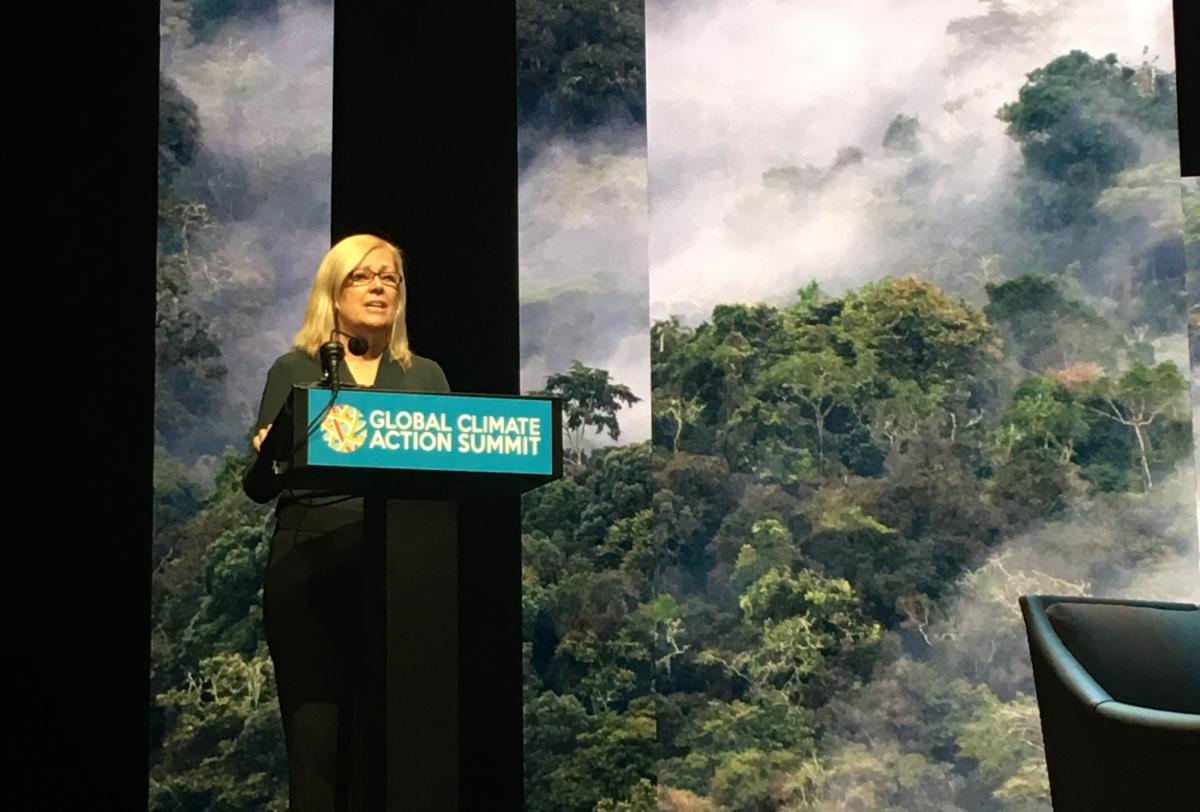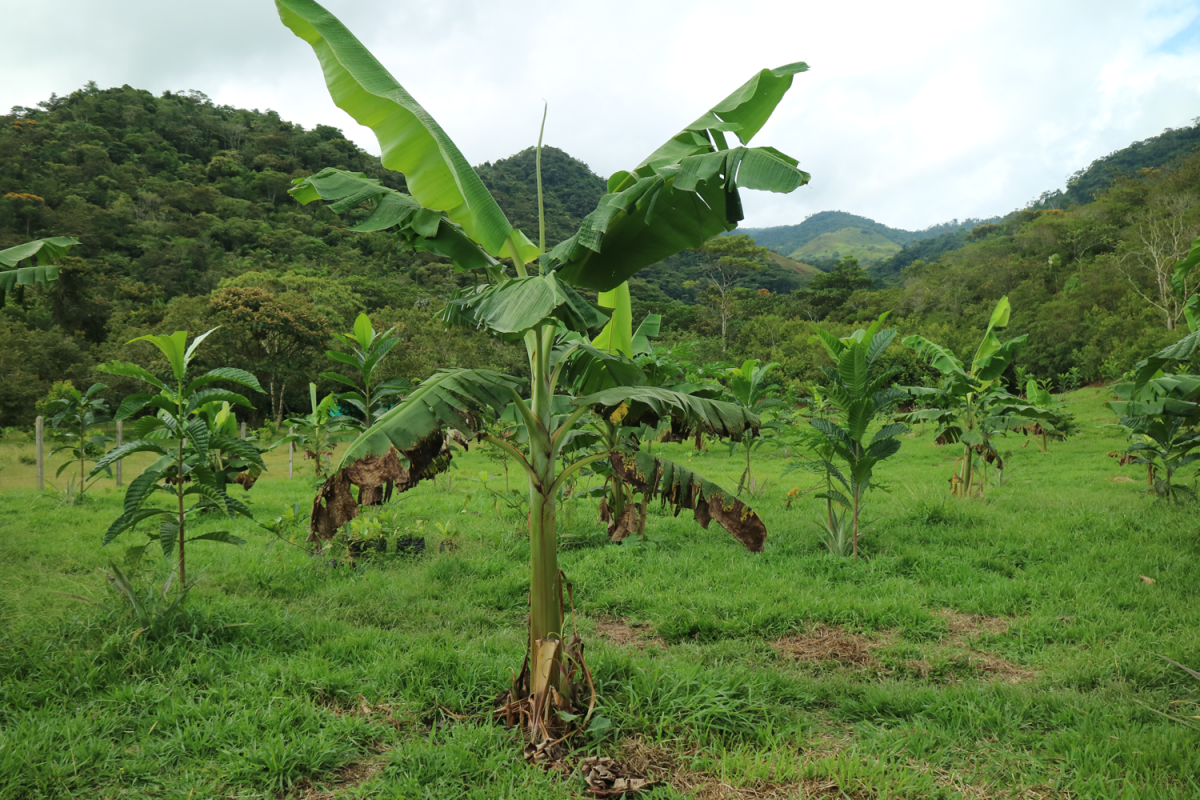Global Climate Action Summit reinvigorates Paris Agreement, push for restoration
Momentum is everything. The U.S. State of California and city of San Francisco kept climate action momentum fresh in our minds by bringing governments, NGOs, companies, Indigenous People, and the international climate change community to the Global Climate Action Summit to reflect on successes and underscore the urgency for greater climate action – action such as nature-based solutions to climate change, highlighting restoration of forests and landscapes.
The Global Climate Action Summit (13-14 September 2018) and associated events provided a self-described, “launchpad for deeper worldwide commitments and accelerated action from countries – supported by all sectors of society – that can put the globe on track to prevent dangerous climate change and realize the historic Paris Agreement.”
An important nature-based solution for all levels of government, the private sector, civil society and international organisations, communities and others, offering the largest and most cost effective potential to mitigate climate change, is forest landscape restoration (FLR).
Carole Saint-Laurent, Deputy Director of the IUCN Global Forest and Climate Change Programme, made full use of an introductory session at the summit to reflect on the large and untapped climate mitigation (and other benefits) potential of restoration. She guided the summit’s audience to critically think about FLR for climate action.
Through IUCN’s work over last 70 years with our members and partners around world, we came to realize that a new approach to restoration was needed – not just about planting tree by tree – but about where, how, with whom to restore to create thriving, low-carbon and resilient landscapes. We call this forest landscape restoration. The key is to work towards both regaining ecological functionality and enhancing human well-being by bringing people together to identify an optimal mosaic of land uses and transitions, across broader landscapes – like a watershed.
A frequent concern for both governments and companies that are considering adopting FLR as a climate solution is the cost. Saint-Laurent allayed such concerns by pointing to an ever-growing body of evidence on the economic benefits of FLR. Some of these benefits can be perceived in the short term, such as through jobs and income generated from ecotourism or nurseries, others in the medium term such as soil retention and improved productivity for farmers, and still others are long-term like the restoration of ecosystem services. She pointed out that:
“Restoration has proven time and time again to be a good investment. Just to the North (of San Francisco), the State of Oregon found that each dollar invested in landscape restoration generated up to US$ 2.5 in economic activity. And in Guatemala they’ve projected a 50-fold return over 30 years from every dollar spent on restoration. That’s very good value.”
Underscoring her argument that the global restoration movement has been taking off, Saint-Laurent pointed out that 56 governments and other entities have already pledged 168 million hectares to FLR under the Bonn Challenge – that’s four times the size of the state of California.
What about FLR’s role in climate change?
Discussions under the Global Climate Action Summit revolved around stories of success and additional actions by multiple levels of government, the private sector, and Indigenous Peoples required to reaching the 30X30 Forests, Food and Land Challenge. This challenge calls on the global community “to take action for better forest and habitat conservation, food production and consumption, and land use, working together across all sectors of the economy to deliver up to 30% of the climate solutions needed by 2030.” As a comprehensive and integrated nature-based solution, FLR can play a major role in the delivery of this and other global and national climate targets, including Nationally Determined Contributions under the Paris Agreement.
Natural climate solutions such as FLR, which involve more sustainable land-use pathways – if implemented to their maximum potential – can deliver up to one third of the climate solution, so how do we leverage the mitigation and resilience potential of forests and land?
The Bonn Challenge and its sister regional initiatives,” continued Saint-Laurent, “underpinned by the FLR approach, and implemented hand in hand with improved land stewardship, can us help reach the 30x30 Challenge and achieve global long-term climate objectives.
In fact, achieving the 2030 objective of the Bonn Challenge would sequester up to 1.7 gigatonnes of carbon dioxide equivalent annually.
The summit ultimately resulted in 17 powerful commitments – 100 NGOs, businesses, state and local governments, and indigenous and local communities pledged to work together under the 30x30 Challenge, the Global Environment Facility (GEF) announced half a billion USD for a new GEF Food, Land Use and Restoration Impact Program, 45 cities joined the Cities4Forests initiative and the Government of Norway pledged $5 million USD over the next five years for the programme.
A full list of the commitments can be found here.





